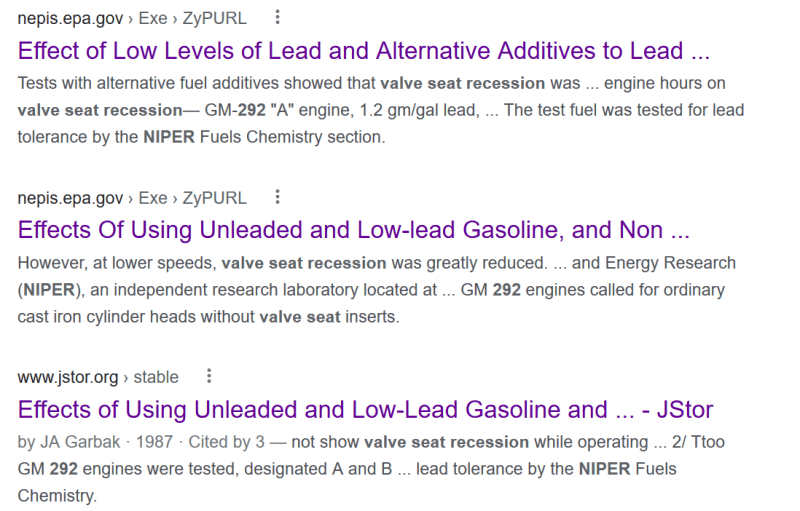Hi,
Slightly unusual situation here in that we have a couple of 60s Triumph car engines running aftermarket fuel injection, with wideband O2 sensors for tuning and trim, but no catalytic converters.
One of these does not (yet) have hardened exhaust valve seats fitted and has started to experience valve seat recession. I know the correct solution is to have hardened seats fitted. However, for various reasons relating to cost and only needing to get another 9 months / 6k miles from this engine before its complete replacement, we are debating whether we can get away with running an additive to halt (or at least slow) the recession process long enough to get us there.
Up to now we have avoided additives due to worries about killing the O2 sensor. (Bosch LSU 4.2). I've now had a bit of a trawl of the web looking to see whether this is a valid worry and struggling to find anything definitive.
Seems lead does definitely cause premature failure though not instant death. Zinc also gets a mention as being a problem, though I've been running high zinc oils with the same O2 sensor 12 years in the other car without trouble.
The common lead substitutes seem to be using potassium or manganese salts and I can't find much about those. Most, but not all, manufacturers say unsuitable for use with catalytic converters (logically enough!) but nothing about O2 sensors specifically.
Not a mainstream situation I know. Anyone have any specific knowledge or experience?
Thanks & Regards
Nick
Slightly unusual situation here in that we have a couple of 60s Triumph car engines running aftermarket fuel injection, with wideband O2 sensors for tuning and trim, but no catalytic converters.
One of these does not (yet) have hardened exhaust valve seats fitted and has started to experience valve seat recession. I know the correct solution is to have hardened seats fitted. However, for various reasons relating to cost and only needing to get another 9 months / 6k miles from this engine before its complete replacement, we are debating whether we can get away with running an additive to halt (or at least slow) the recession process long enough to get us there.
Up to now we have avoided additives due to worries about killing the O2 sensor. (Bosch LSU 4.2). I've now had a bit of a trawl of the web looking to see whether this is a valid worry and struggling to find anything definitive.
Seems lead does definitely cause premature failure though not instant death. Zinc also gets a mention as being a problem, though I've been running high zinc oils with the same O2 sensor 12 years in the other car without trouble.
The common lead substitutes seem to be using potassium or manganese salts and I can't find much about those. Most, but not all, manufacturers say unsuitable for use with catalytic converters (logically enough!) but nothing about O2 sensors specifically.
Not a mainstream situation I know. Anyone have any specific knowledge or experience?
Thanks & Regards
Nick

